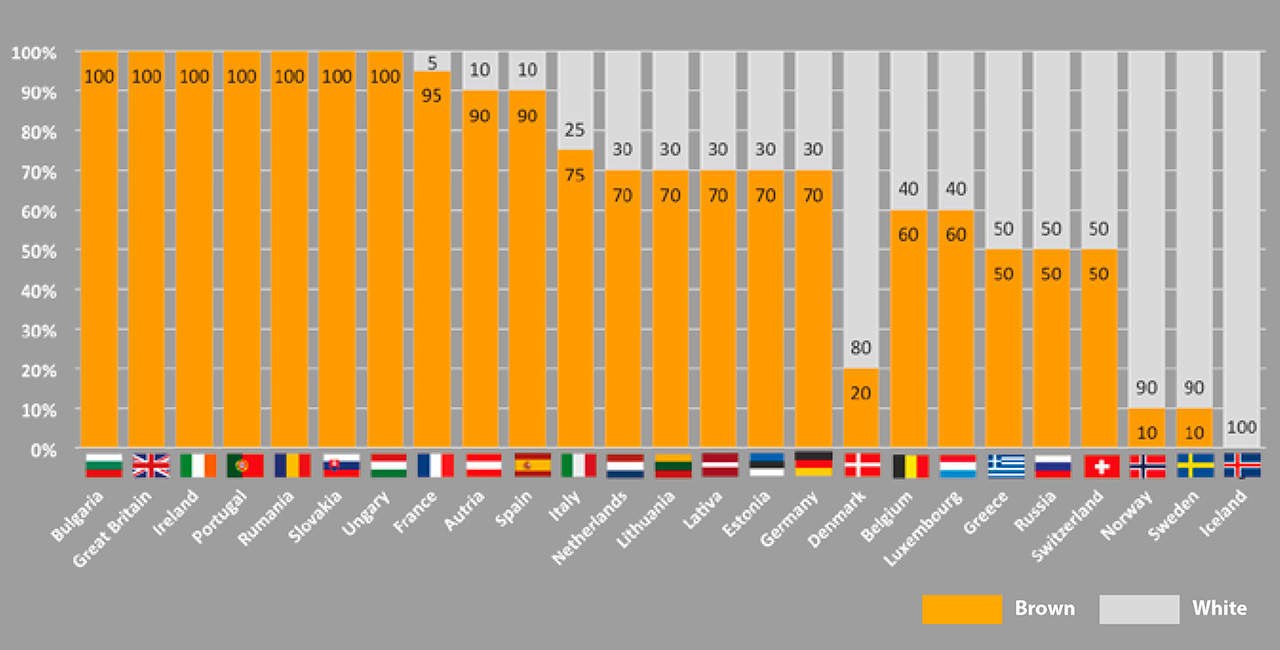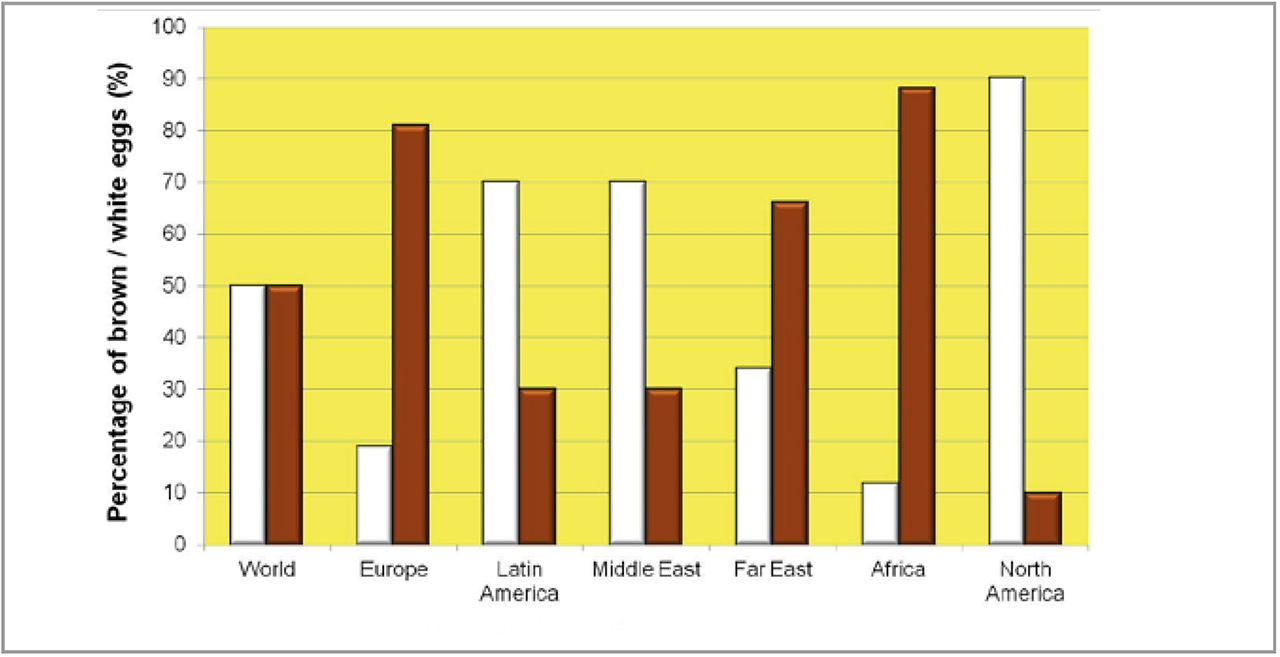A top quality egg is characterised by internal values as well as the external shell quality. This means the shell must be clean and enough strong to survive handling and transportation procedures, especially during the last weeks of production. In addition to these primary shell quality criteria and adequate egg weight, the shell colour also matters to consumers.
Eggshell colour varies considerably between different poultry breeds and is determined by pigments. These pigments are secreted from the oviduct in last stages of egg formation. There is no major difference in internal egg quality between white, brown or tinted eggs.
Consumer groups in different countries in the world, however, show distinct preferences for a particular eggshell colour. These preferences seem to be more defined by the traditional and cultural habits of individual countries.
For instance, whereas consumers in North American countries or Mexico prefer almost 100% white eggs, the consumption of brown eggs in African countries is about 90%.
The situation in Europe is more or less similar. Many countries in Europe such as Portugal, Great Britain or Bulgaria consume almost 100% brown eggs. An exception is Scandinavian countries with the greatest demand being for white eggs. Consumers in other European countries such as Russia, Germany, the Netherlands or Greece eat eggs with both shell colours. (Figure 1)

Figure 1: European Egg Market of brown & white eggs
This situation changes completely when we consider the major egg producers in Asia such as China and Japan. In China nearly 70% of total egg production is brown eggs and only about 5% is white eggs. The remaining 25% of total egg production in China is tinted eggs.
It is interesting to note that China’s tinted egg production alone is more than the entire egg production in the United States of America. It is important to be aware that these statistics for different countries change over time and are therefore not constant. Nevertheless, the fact remains that the proportion of white and brown eggs consumed worldwide is roughly 50:50. (Figure 2)

Figure 2: Estimated percentage of brown and white eggs worldwide
Egg market in the Middle East
The egg market in Middle Eastern countries has been influenced by different crises and challenges for many years.
Conflicts in this region, besides outbreaks of diseases such as avian influenza or Newcastle disease, are among the main challenges facing this large egg market. The main players in the Middle East market are more or less always the same and include Turkey, Iran, Saudi Arabia and Pakistan.
Of these countries, Turkey exports 30% of its production to neighbouring countries. Almost 80% of egg production in Turkey is accounted for by brown eggs with the remaining 20% being white eggs.
The preference for a certain egg colour in this region shows a similar pattern to that described for the world. In Iraq for example, brown eggs are mostly consumed with the exception of some areas in the northern part of country where white eggs are preferred. In contrast, Pakistan and Iran prefer 100% white eggs, although it appears that this pattern is slowly changing as far as Iran is concerned.

Image 1. Managing director of “Toyoor Nasim Co.” Mr Khorasanizadeh and his sons as production managers, a real example of a family business | Image 2. Parent Stock farm compound of “Toyoor Nasim” close to city of Isfahan
First brown breeders in Iranian Market
For the first time, the Toyoor Nasim company decided to import a parent stock flock of the LOHMANN BROWN-LITE breed into the Iranian market. In addition to large integrations in the poultry business in Iran, there are still some privately-owned family companies active in this sector. Toyoor Nasim is one of the best examples.
It is run by owner and managing director, Mr Khorasanizadeh, whose sons are the production managers. Their flock started production some weeks ago with an excellent laying performance selling high quality, brown day-old chicks to the market.
Consequently, the Iranian egg market will not be 100% white in the near future. Only time will tell to what extent the preference of egg shell colour will change in this market or in other countries in the world. Whatever the preference, one fact remains unchanged; the question is not about the colour, the question is about the egg itself.
An egg is an egg and it is one of the most nutritious and valuable foods on planet Earth!
Farhad Mozafar










